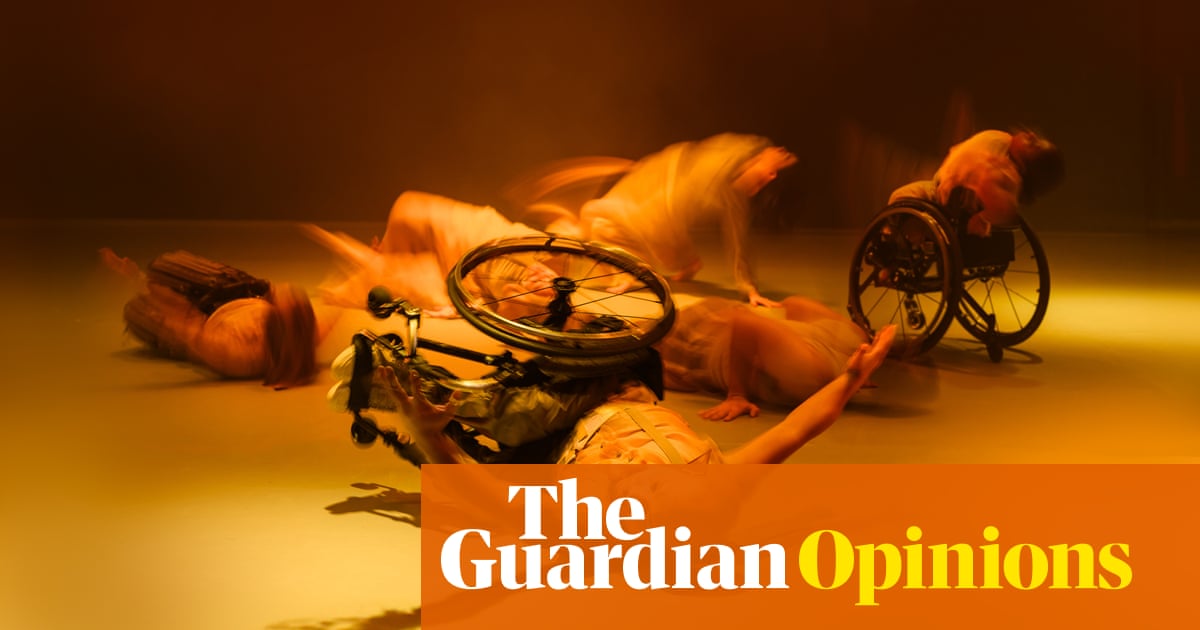Six dancers glide across the stage at the Lowry in Salford. As a visually impaired person, I would expect to feel lost watching dance but I know how they link arms and roll their shoulders, how the light captures their sepia costumes. This is Lived Fiction, an inclusive contemporary dance work by Stopgap, with audio description as a key part of the performance.
I enjoy audio-described theatre, but was unsure how it would work for dance, which, to me, seems so inherently visual.
Lily Norton, the show’s access artist and co-writer, is on stage throughout. In a contrast to the traditional form of audio description, I’m not having to fiddle awkwardly with the volume on a headset because Norton is delivering it to the whole audience.
Director and co-writer Lucy Bennett tells me how Stopgap wanted to work this way after realising the power of creative access in its online videos during the pandemic.
“We had just ‘tagged on’ the access in past productions,” says Bennett. “There were disabled role models on stage, there were people articulating about the company who are disabled, but the access wasn’t embedded. So how are disabled people going to get into the theatre and experience our work and realise this is something they feel passionately about? It’s almost like we were doing all this stuff, but then performing to a non-disabled group of people.”
I nod as Bennett talks about access being “tagged on”. Often, audio-described performances take place on only a day or two in a production’s run, restricting when I can watch a show.
Bennett talks through the process for creating Lived Fiction’s audio description, written collaboratively by the company. “We started by describing the movement and how the dancers felt moving, and what they were hearing, seeing and feeling. Lily was in the studio, bathing in everyone’s descriptions. They would pen things down, and we would try things out. If the choreography was incredibly poetic, we needed to make the audio description poetic.”
Norton’s perspective very much comes through. They are a character, their voice guiding the audience through each dancer’s movement – the arms arching, wheels gliding, but also a sense of story. They sometimes share how they feel, and it helps build connection between the audience and what’s happening on stage, a breaking of separation. My fully sighted husband says it helps him appreciate the meaning behind the choreography and follow the thread of what we are watching.
Access is embedded in other ways, from Ben Glover’s creative captioning to the relaxed atmosphere. Each dancer’s costume makes noises with zips or jangling keys, which helps me recognise who is performing. “The musical composition by Dougie Evans often represents exactly what the dancers are doing movement-wise,” adds Bennett.
At the start of the performance, we are told not everything may match our frequency, but they hope that we will each find our own window into the work. There are purposeful points where Norton doesn’t give a description, but I don’t feel lost. The picture they have already painted combines with the music, and I let myself absorb the moment, not worrying about the intricacies of movement.
I am surprised that the description isn’t all a literal explanation of each move – 90 minutes of that would be exhausting – but instead about the emotional resonance. When the dancers Emily Lue-Fong and Nadenh Poan duet, Norton describes the way their bodies coil together, skin-on-skin, their eyes meeting, how one “slips like water” over the other. I feel the tenderness of the dance, even though I don’t know every move that’s happening. The emotional weight is more important.
As the performance finishes, I feel I have experienced something with everyone here. For the first time, I’ve been given my window into dance.

